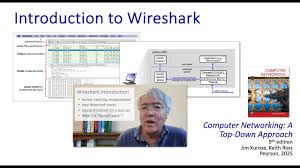Understanding 5G GHz Frequency Bands
telcomatraining.com – As the world becomes increasingly connected, the demand for faster and more reliable wireless communication continues to grow. At the forefront of this evolution is 5G technology, promising ultra-fast speeds, minimal latency, and the ability to connect billions of devices. A key element driving these advancements is the GHz frequency bands utilized by 5G networks. In this article, we explore what these frequency bands are, how they work, and why they matter in the 5G ecosystem.
What Are GHz Frequency Bands in 5G?
The term “GHz” stands for gigahertz, a unit of frequency equal to one billion hertz. In the context of 5G, GHz frequency bands refer to the range of radio frequencies used to transmit and receive data wirelessly. These frequencies are divided into different bands, each with unique properties and use cases. The 5G spectrum is typically categorized into three key frequency ranges:
- Low-band (sub-1 GHz)
- Mid-band (1 GHz – 6 GHz)
- High-band (above 24 GHz, also known as mmWave)
While all three play vital roles, the GHz bands, particularly the mid- and high-bands, are central to 5G’s performance capabilities.
1. Mid-Band Frequencies (1 GHz – 6 GHz)
Often referred to as the “sweet spot” of 5G, mid-band frequencies offer a balance between coverage and speed. These bands, such as 3.5 GHz and 2.6 GHz, provide faster data rates than low-band while covering larger areas than mmWave.
Mid-band 5G is ideal for urban and suburban areas, offering:
- Improved capacity for multiple users
- Lower latency for real-time communication
- Faster download and upload speeds than 4G LTE
Carriers worldwide are investing heavily in this spectrum due to its ability to support high-speed mobile internet without excessive infrastructure demands.
2. High-Band Frequencies (mmWave)
The millimeter wave (mmWave) spectrum ranges from 24 GHz to 100 GHz, offering incredibly high data speeds—up to 10 Gbps in ideal conditions. These frequencies enable revolutionary applications like:
- 4K/8K video streaming
- Augmented and Virtual Reality (AR/VR)
- Smart cities and autonomous vehicles
However, high-band 5G has limitations:
- Short range (less than 1 km)
- Poor penetration through buildings and obstacles
- Higher deployment cost due to more required small cell infrastructure
Despite these challenges, mmWave is crucial for delivering the full potential of 5G in densely populated areas, stadiums, and industrial environments.
Why GHz Bands Matter in 5G
Understanding the GHz frequency bands is essential to grasp how 5G delivers such transformative benefits. Here’s why they matter:
- Speed and Performance: Higher GHz frequencies enable lightning-fast data transfer, crucial for emerging technologies like AI, IoT, and edge computing.
- Capacity and Scalability: More bandwidth allows more simultaneous connections, which is vital for smart homes, connected cars, and industrial automation.
- Tailored Solutions: Different frequency bands enable telecom providers to deliver tailored solutions based on the environment—urban, suburban, or rural.
Spectrum Allocation and Global Use
Governments and regulatory bodies allocate GHz spectrum bands differently around the world. For example:
- The 3.5 GHz band is widely used in Europe and Asia.
- The 28 GHz and 39 GHz bands are commonly used in the United States.
- Countries like Japan and South Korea are pioneering multi-band deployments, combining low-, mid-, and high-band spectrums for optimal coverage and performance.
Conclusion
The GHz frequency bands are the backbone of 5G innovation. From mid-band frequencies delivering widespread high-speed coverage to mmWave enabling cutting-edge applications, these bands are shaping the future of wireless communication. As 5G continues to expand globally, understanding these frequency bands helps us better appreciate the technology that will drive the next decade of digital transformation.







